Water heaters are one of those appliances that have a predetermined lifespan — or so we’ve always been told. Actually, water heaters have rust-preventing consumables that, when expended, will allow your water heater to begin rusting.

inside an electric water heater
Since we purchased our home six years ago, we’ve been told by every HVAC technician entering our home that our water heater needs to be replaced. *note* The HVAC technicians are there doing preventive checkups on our heat pump and air handler. First, some history. Our townhome was built in 1988 so our water heater is 21 years old. Most water heaters are rated to last 6, 9 or 12 years. So how did our last so long? There are two major factors that affect how long your water heater lasts. “How much water it heats” and “how hard your water is.” If your water has a high mineral content or you soften your water with some sort of chemical treatment you need to perform preventive maintenance on your water heater more often. If you have a full household and you go through a lot of hot water, your water heater is working harder and needs to be looked at more often.

anode life cycle
If a water heater works fine for so long, what makes it eventually start rusting? Inside every water heater are metallic rods called anodes. The anodes (made of magnesium, aluminum or some combination thereof) oxidize and break down so the steel in your water heater doesn’t. Usually a 6-year water heater has a small anode while 9 and 12 year water heaters have one larger or sometimes two anodes. The key to making your water heater last is making sure your water heater anode is still able to function. You’ll have do a little work and inspect your anode but this is the only way to know for sure how well your water heater is being protected.
This summer I inspected our water heater for the first time — ever. Being a naive home-owner, I didn’t know they needed to be inspected. One morning our hot water wasn’t so I bought a book and educated myself. When I pulled our anode out it was just a rusty wire about twelve inches long. That’s not a good sign. A new anode is about 40″ long and 3/4″ – 1″ in diameter. Our anode obviously hadn’t been working for a while. To investigate things further, I drained our water heater, pulled out both elements and looked inside with a flashlight. What I found was even more discouraging. Inside of every anode is a steel wire that ties everything together. Our steel wire had rusted and broken off. The part that broke off contacted the lower heating element and burned it out. Hence, the dead water heater. Talking to our neighbor I discovered that he’d recently replaced his water heater because it was twenty years old — just like ours. There was nothing wrong with his water heater so he offered it to us. I gladly accepted his offer and brought the water heater home to check it out.
The anode in his water heater was a little better that ours. The internal wire was full length and there were a few chunks of anode doing their job. The inside of the tank looked clean and the mounting points for the heating elements were in good condition. The mounting points on our water heater had begun to rust and the inside of the tank didn’t look good. Encouraged by what I saw, I bought new heating elements. The anode I had to order on-line from WaterHeaterRescue.com. The heating elements I picked up from Lowes. When you are shopping for heating elements there are cheap elements and there are good elements.

I bought a cheap upper element and a good lower element because the lower element does the most work. In retrospect I probably should have purchased a good upper element as well but I’m not losing any sleep at night over it.
Before I put everything back together I flushed out the water heater tank. As the anode does it’s job and breaks down, small pieces fall to the bottom of the tank. Also, minerals in the water precipitate out by the extreme heat of the heating elements. This precipitates build up in the bottom of the tank, making it less efficient and potentially damaging the bottom element if they build up enough.

what builds up in the tank
Flushing the tank took about ten minutes but I had the tank on our back porch while I inspected it. I was able to slosh water inside, drain it and repeat. Flushing the tank while it’s hooked up could take anywhere from a half hour to an hour. I was amazed how much sediment came out of the drain. I’ll be flushing the tank once a year now. I let the tank sit out in the sun for about an hour to dry. I also put EvapoRust on the heating element fittings and anywhere else that I saw signs of rust. EvapoRust is non-toxic and I flushed the tank thoroughly once it was connected to our hot and cold lines. After I had all of my parts gathered and my tools assembled, it took me about two hours to reinstall our “new” water heater. I’m slow at wiring and sweating copper so you might be faster.
My neighbor bought a new water heater and now had peace of mind that his water heater would last at least twelve years. Our donor water heater was now refurbished and I was confident that it would last at least twelve more years. I plan to check our anode at the three-year and six-year mark, just to see how it’s doing. Total cost for our “new” water heater? $40 for the anode, $10 for the upper anode and $20 for the lower anode. I could have reused the old anodes but I like the extra insurance of new ones. My neighbor’s water heater cost him about $350. His is a little more efficient than mine but I’ll take care of that with a blanket of insulation around our tank.
When thinking about conservation, fixing something that is old is almost always a smaller impact to the environment then buying something new. Keeping my water heater out of a landfill made my choice to repair our water heater rather than purchasing a new one even easier. The energy saved by purchasing a new, more efficient water heater would take centuries of use to recoup the energy it took to produce that new water heater.
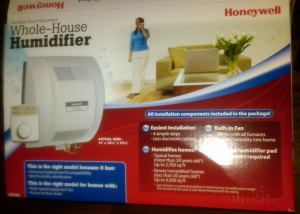
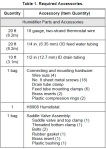
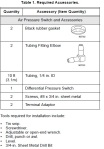

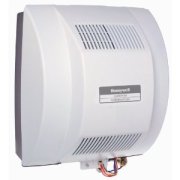 Pricing on the HE-360 seems relatively fixed. There’s not a difference between the price at Amazon.com or Home Depot — as long as you compare apples to apples. I picked up my unit from Home Depot yesterday morning–it was the only one they had in stock. They had a few of the Honeywell bypass-type humidifiers but I was after the HE-360. Luckily, it was perched three shelves up, almost out of sight.
Pricing on the HE-360 seems relatively fixed. There’s not a difference between the price at Amazon.com or Home Depot — as long as you compare apples to apples. I picked up my unit from Home Depot yesterday morning–it was the only one they had in stock. They had a few of the Honeywell bypass-type humidifiers but I was after the HE-360. Luckily, it was perched three shelves up, almost out of sight.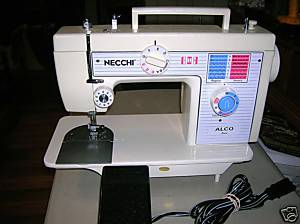 No matter what brand sewing machine you own (Bernina, Singer, Simplicity, Kenmore, Elna, Riccar, Necchi, Pfaff, Viking, White, etc) having a copy of the owners manual is important. If you’re DIY’er or someone that performs their own maintenance having a copy of the service manual is even better. (I’m still looking for a copy of a Necchi 524FB service manual) Sewing machines can last for decades or longer but they do require occasional care and maintenance.
No matter what brand sewing machine you own (Bernina, Singer, Simplicity, Kenmore, Elna, Riccar, Necchi, Pfaff, Viking, White, etc) having a copy of the owners manual is important. If you’re DIY’er or someone that performs their own maintenance having a copy of the service manual is even better. (I’m still looking for a copy of a Necchi 524FB service manual) Sewing machines can last for decades or longer but they do require occasional care and maintenance.

 for about three years now. Our cats love it so much that it’s the only thing they will drink out of. Last month we went on a weekend trip and forgot to top off the fountain before we left. When we got home the fountain was dry and the pump motor had seized. Parts can be hard to find for these fountains and they can be expensive. So, I did some research. The pump motors for the Original will be made by either Askoll or Resun. Our motor happened to be made by Resun. You can purchase the motor, o-ring and impeller from
for about three years now. Our cats love it so much that it’s the only thing they will drink out of. Last month we went on a weekend trip and forgot to top off the fountain before we left. When we got home the fountain was dry and the pump motor had seized. Parts can be hard to find for these fountains and they can be expensive. So, I did some research. The pump motors for the Original will be made by either Askoll or Resun. Our motor happened to be made by Resun. You can purchase the motor, o-ring and impeller from 










